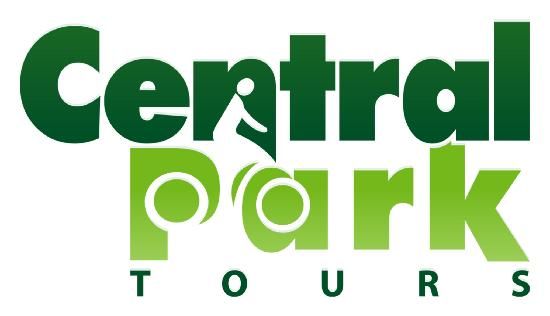Central Park's Green Code: Environmental Responsibility for Visitors
Central Park is not only a beloved recreational space but also a vital ecosystem that supports a diverse array of plant and animal life.
Preserving Natural Habitats
As visitors, it's our responsibility to preserve these natural habitats and contribute to the park's sustainability efforts. Here are some key practices to follow:

- Stay on designated paths: To protect the park's delicate flora, it's crucial to stay on designated paths and avoid trampling vegetation. Straying off trails can disrupt the natural habitat and harm plant life.
- Avoid picking or damaging plants: While Central Park boasts a rich variety of plants and flowers, it's important to refrain from picking or damaging them. Leave them for everyone to enjoy and allow them to contribute to the park's ecosystem.
- Dispose of waste responsibly: When visiting Central Park, carry a reusable water bottle and avoid single-use plastics. Dispose of any waste in designated bins, ensuring it doesn't end up in the park's water bodies or harm wildlife.
- Refrain from feeding wildlife: While it may be tempting to feed the park's wildlife, it's best to let them forage for their natural food sources. Human food can be harmful to animals and disrupt their natural behaviours.
- Support park initiatives: Stay informed about the park's conservation programs and initiatives. Consider participating in volunteer activities or making a donation to support the park's sustainability efforts.
By respecting the park's natural habitats and adopting environmentally conscious practices, we can help preserve the beauty and ecological balance of Central Park. Stay tuned for the next part, where we'll explore the importance of recycling and waste reduction within the park.
Recycling and Waste Reduction

Central Park's commitment to environmental responsibility extends to waste management and recycling. As visitors, we can actively contribute to these efforts by practicing recycling and waste reduction. Here's how you can make a difference:
- Utilize recycling bins: Central Park provides recycling bins throughout its grounds. Dispose of recyclable items such as plastic bottles, aluminium cans, and paper products in these designated bins. Look out for the recycling symbol and follow the guidelines for proper sorting.
- Pack reusable items: Before heading to Central Park, pack reusable items such as water bottles, cutlery, and food containers. This reduces the need for single-use plastics and minimizes waste generation during your visit.
- Minimize packaging waste: When planning a picnic or bringing snacks to the park, opt for items with minimal packaging. Choose fresh produce, bring homemade meals, or select products with eco-friendly packaging options.
- Clean up after yourself: Take responsibility for your waste by ensuring that you clean up after yourself. Carry a small bag for trash and dispose of it in the appropriate bins when you're done. Leaving the park as you found it helps maintain its cleanliness and beauty.
- Spread the word: Encourage others to join in recycling and waste reduction efforts. Share your knowledge and experiences with friends, family, and fellow park visitors. Together, we can create a positive ripple effect and inspire more environmentally conscious practices.
By embracing recycling and waste reduction practices, we actively contribute to the preservation of Central Park's natural beauty and reduce our ecological footprint. Let's continue our journey in the next part, where we'll explore the significance of preserving wildlife and respecting their habitats within the park.
Respecting Wildlife and their Habitats
Central Park is home to a diverse range of wildlife, including birds, squirrels, turtles, and more. Respecting and preserving their habitats is essential for maintaining the park's ecological balance. Here's how we can be mindful of wildlife during our visit:

- Observe from a distance: While it's exciting to spot wildlife in Central Park, it's important to observe them from a respectful distance. Using binoculars or zoom lenses allows for a closer look without causing disturbance or stress to the animals.
- Do not feed the animals: Feeding wildlife is discouraged in Central Park. Human food can be harmful to animals and disrupt their natural diets. It can also create dependency and alter their behavior. Let the animals forage for their natural food sources.
- Keep dogs on leashes: If you're walking your dog in Central Park, always keep them on a leash. This not only ensures the safety of other visitors but also prevents your dog from chasing or disturbing wildlife.
- Stay on designated paths: Straying off designated paths can disturb wildlife habitats and damage sensitive areas. Stick to marked trails and pathways to minimize your impact on their natural habitats.
- Reduce noise and disturbances: Avoid making loud noises or engaging in activities that may startle or disturb wildlife. Keep in mind that Central Park is their home, and we should respect their need for peace and tranquillity.
By respecting wildlife and their habitats, we contribute to the preservation of Central Park's natural ecosystem. Remember, observing and appreciating wildlife from a distance allows them to thrive undisturbed. In the next part, we'll explore the significance of sustainable practices and how they contribute to the park's overall environmental well-being.
Embracing Sustainable Practices
Central Park's commitment to environmental responsibility extends beyond wildlife and waste management. Sustainable practices play a crucial role in preserving the park's beauty and reducing its ecological impact. Here are some ways we can embrace sustainability during our visit:

- Choose eco-friendly transportation: Consider walking, biking, or taking public transportation when visiting Central Park. This reduces carbon emissions and promotes a cleaner, healthier environment.
- Pack reusable items: Bring reusable water bottles, coffee cups, and bags to Central Park. By avoiding single-use plastics and disposables, we minimize waste generation and contribute to a more sustainable future.
- Conserve water: Central Park has implemented water-saving measures, and we can do our part too. Use water responsibly, avoid excessive irrigation, and report any water leaks or wastage to park authorities.
- Respect park vegetation: Be mindful of park vegetation and avoid damaging or uprooting plants. Stepping on flowerbeds or tree roots can have long-lasting negative effects on the park's ecosystem.
- Support green initiatives: Stay informed about the park's sustainability initiatives and support them when possible. Participate in educational programs, volunteer for conservation projects, or donate to organizations working towards the park's environmental well-being.
- Advocate for change: Extend your commitment to sustainability beyond Central Park. Share your experiences, educate others about the importance of environmental responsibility, and advocate for sustainable practices in your community.
By embracing sustainable practices, we become stewards of Central Park's natural resources and contribute to a greener future. Let's continue our journey in the final part, where we'll explore the significance of responsible behaviour and the collective effort needed to maintain the park's environmental integrity.
The Power of Responsible Behaviour
Responsible behaviour is the cornerstone of maintaining Central Park's environmental integrity. Each visitor has a crucial role to play in ensuring the park's preservation for future generations. Here are some final tips on responsible behaviour in Central Park:
- Follow park rules and regulations: Familiarize yourself with Central Park's rules and regulations and ensure compliance during your visit. These guidelines are in place to protect the park, its wildlife, and the enjoyment of all visitors.
- Stay on designated paths and areas: Stick to designated paths and areas to prevent damage to sensitive vegetation and wildlife habitats. Respect any closed-off areas or restoration zones, as they require special care and protection.
- Leave no trace: Practice the "Leave No Trace" principle by cleaning up after yourself. Dispose of trash in designated bins or take it with you when bins are not available. Leave the park as you found it, or even better, cleaner than before.
- Be considerate of others: Central Park is a shared space, so be considerate of fellow visitors. Avoid excessive noise, respect personal space, and be mindful of cultural and recreational diversity within the park.
- Educate and inspire: Spread the message of responsible behaviour by educating others about the importance of environmental stewardship. Inspire your friends, family, and fellow visitors to follow sustainable practices and uphold the park's natural beauty.

Remember, Central Park is a treasure that belongs to all of us. By embracing responsible behaviour, we contribute to the park's preservation, making it a place of enjoyment and inspiration for generations to come.
As you explore Central Park, let the beauty of nature and the importance of environmental responsibility guide your actions. Together, we can ensure that this iconic park remains a haven for both wildlife and visitors alike.
Thank you for joining us on this journey through Central Park's environmental responsibility. Enjoy your time in the park and cherish its natural wonders!
